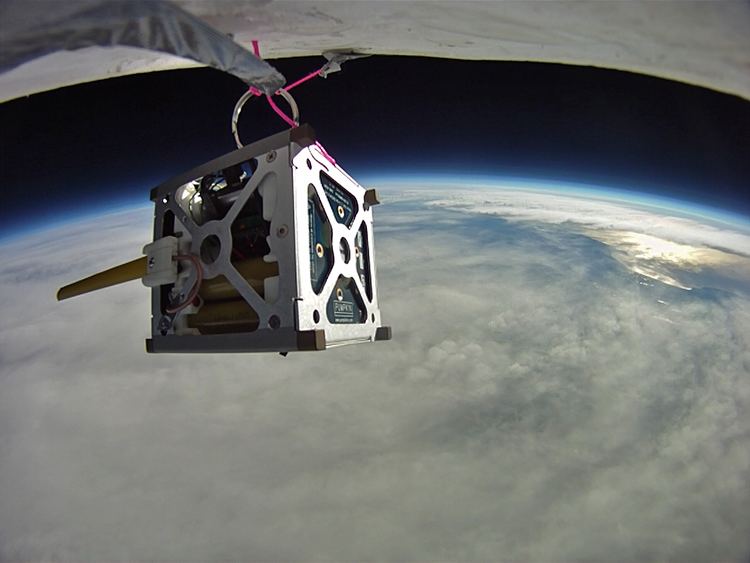 | ||
PhoneSat is an ongoing NASA project, part of the Small Spacecraft Technology Program, of building nanosatellites using unmodified consumer-grade off-the-shelf smartphones and Arduino platform and launching them into Low Earth Orbit. This project was started in 2009 at NASA Ames Research Center (Moffett Field, California).
Contents
When the project started, a typical smartphone had a faster CPU and more memory than the average satellite, one or two cameras, multiple acceleration and rotation sensors, a compass, a GPS receiver, radios, and a Li-Ion battery, all of which had benefited from significant research and development efforts and economies of scale in the telecommunications industry to reduce cost.
The construction cost of the first version of PhoneSat satellite was reported to be US$3,500 and that of the second version was reported to be below US$7,000. The chassis is a single standard CubeSat bus and sized 10 cm × 10 cm × 10 cm (around 4 inches per side). Control software and firmware was made open source whenever possible.
The PhoneSat project was selected by Popular Science magazine as one of eleven "Best of What's New" in the aerospace category in 2012.
Versions
PhoneSat 1.0 uses a Nexus One smartphone (HTC) as the onboard computer running the Android 2.3.3 operating system. This version has no solar panels and runs from energy stored in 12 lithium-ion (Li-Ion) batteries. Graham is the basic PhoneSat 1.0 model. Bell is a PhoneSat 1.0 model with an Iridium transceiver mounted at one end. The basic mission goal of PhoneSat 1.0 was to stay alive in space for a short period of time, sending back digital imagery of Earth and space via its camera, while also sending back information about the satellite's health. To prepare for such a mission, NASA tested PhoneSat 1.0 in various extreme environments, including thermal-vacuum chambers, alpha and beta radiation testing (no neutron testing), vibration and shock tables, sub-orbital rocket flights and high-altitude balloons.
PhoneSat 2.0 is built with a Nexus S smartphone (Samsung), running the Android 2.3.3 operating system. There is a two-way S band radio added by engineers to communicate with Earth, four Li-Ion batteries, solar panels to recharge the batteries, and a GPS receiver. To control satellite orientation, several magnetorquer coils and reaction wheels were added. Alexander is also known as PhoneSat 2.0 Beta or PhoneSat v2a. The reason for the strange simultaneous launch of PhoneSats 1.0 and 2.0 beta is that the PhoneSats 1.0 launches were delayed until 2.0 beta was ready to launch.
PhoneSat 2.4 included a two-way S band radio, allowing engineers to command the satellite from Earth, and a system to control the orientation of the cubesat in space.
The PhoneSat bus will be used in several future projects, including the Ethersat nano-satellite constellation.
Launches
Three NASA PhoneSats were launched aboard the Antares 110 A-ONE rocket at 21 April 2013, 21:00 UTC from MARS LP-0A. Two were PhoneSats 1.0, named Graham and Bell; and one was a PhoneSat 2.0, named Alexander.
They were named after Alexander Graham Bell, the inventor of the telephone. They have masses of 2.8 pounds (1.25 kg), 2.9 pounds (1.3 kg), and 3.14 pounds (1.426 kg). All three had deorbited before 27 April 2013, according to the PhoneSat team, several pictures were downloaded from them by radio amateurs and NASA Ames PhoneSat team.
PhoneSat 2.4 launched in November 2013 aboard the Minotaur I ORS-3 rocket at 20 November 2013, 01:15 UTC from MARS LP-0B, with an expected orbital lifetime of up to one year.
PhoneSat 2.5 launched in April 18 of 2014, 19:25 UTC as a piggyback payload aboard Spacex Falcon 9 rocket.
